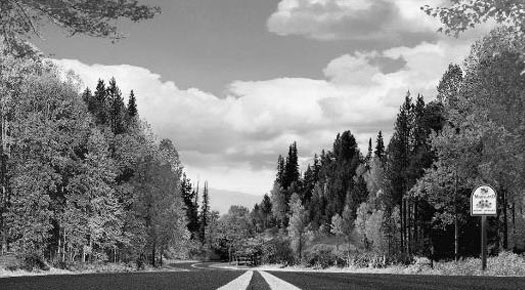
A new study by Baylor University has found that those who live in communities with beautiful scenery and comfortable weather are less likely to be affiliated with organized religion.
“Beautiful weather, mountains, and waterfronts can serve as conduits to the sacred, just like traditional religious congregations,” said lead author Todd W Ferguson, a doctoral candidate in sociology in Baylor’s College of Arts & Sciences.
The researchers believe just like natural resources serve as economic attractions for residents and tourists, they may also have the potential to serve as a spiritual retreat for large portions of the population and compete with traditional religious practices. However, Ferguson also said that the findings do not necessarily indicate whether enjoying better outdoors tempt believers away from the confines of a church on a regular weekend.
“…We’re not claiming that residents in areas richer with natural amenities are more likely to create a ‘church of nature,'” he said.
For some individuals, nature may boost what they discover at their religious get-togethers, since many traditional faith groups actually encourage their members to utilize natural environment to express their spirituality.
While assessing religious nones, who do not associate themselves with any one religion but are not necessarily atheists or agnostics, Ferguson said natural elements like forests, mountains and lakes can offer some sort of a divine connect.
“When a person hikes in a forest to connect with the sacred, that individual may not feel a need to affiliate with a religious group because spiritual demands are being met,” Ferguson said.
He also explained that some nones have in fact spoken of adhering by nature-based spiritualism. Additionally, nature does not have time restrictions like most congregations do, as organized religious groups can only meet during certain hours in a given week for the convenience of every member.
For their survey, Ferguson’s team assessed data from the United States Department of Agriculture, United States Census Bureau and Religious Congregations and Membership Study to analyze cross-sectional differences in religious affiliation rates among 3,107 American counties with the help of county-level rates per 1,000 individuals. Religious adherence was defined as all members of traditional faith groups, including adult members, their children an estimated number of other participants who may not be considered members otherwise, such as those who have been baptized but do not conform or are not perceived as being eligible for communion, as well as those attending regular services.
The researchers also assessed data from the USDA concerning environmental standards that people prefer, including winter sun, warm winter, low summer humidity, temperate summer, topographical variation and water areas to conclude there are high possibilities that outdoor activities making use of natural resources, such as backpacking, surfing or scuba diving, may be considered as spiritual experiences.
“Scholars also need to explore whether the relationship between natural amenities and religion adherence rates is just an American phenomenon, or whether it also exists in areas such as Western Europe, which have lower rates of religious adherence,” Ferguson said.
Ferguson’s study, titled ‘The Natural Environment as a Spiritual Resource’ was published in a journal called Sociology of Religion.
Photo Credits: Visit Maryland
